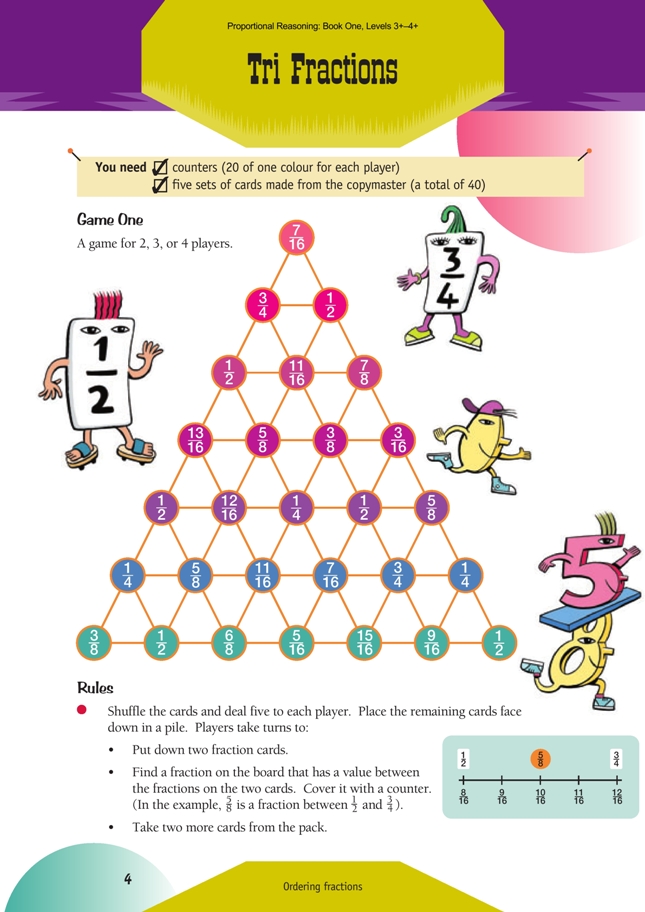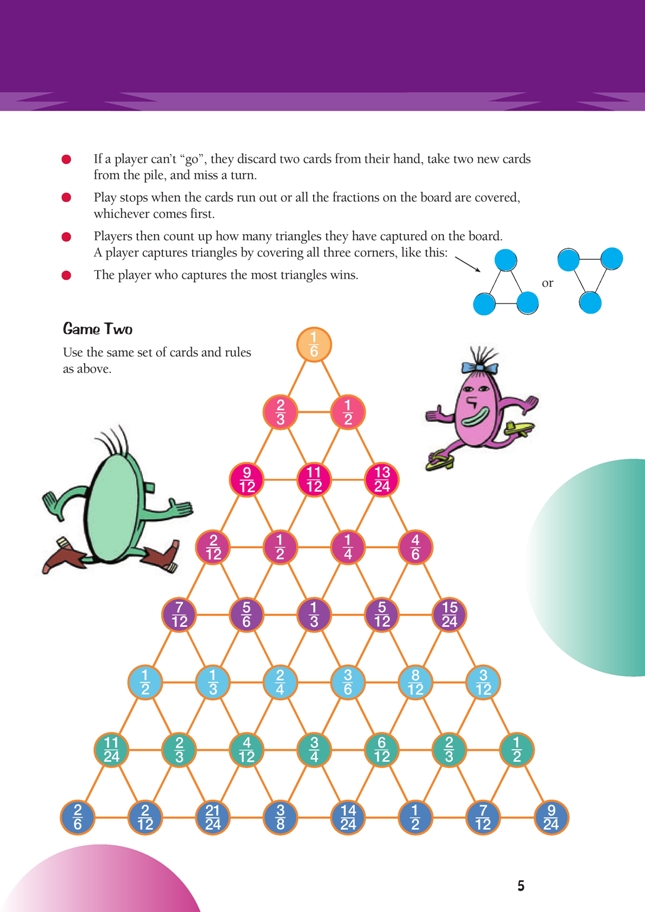This is a level 4 number activity from the Figure It Out series. It relates to Stage 7 of the Number Framework.
A PDF of the student activity is included.
Click on the image to enlarge it. Click again to close. Download PDF (612 KB)
order fractions using related denominators
Number Framework Links
Use this activity to help students to consolidate and apply their knowledge of equivalent fractions (stage 7).
- Counters (20 of one colour for each player)
- FIO, Level 3-4+, Proportional Reasoning, Book One, Tri fractions, pages 4-5
- Five sets of cards make from the copymaster (a total of 40)
- Fraction Pieces or Fraction Strips
In this enjoyable game, students practise the ordering of fractions less than 1. Introduce the game by explaining the rules and then demonstrating it with a team of players while the rest of the class or group observes.
All the denominators in Game One relate as doubles. Discuss with your students how this feature helps to make it easy for them to select a fraction. They may see that all the denominators can easily be converted to 16 and the equivalent fraction found for each. The fractions on the cards can easily be converted to the same denominator.
Model a procedure for resolving disputes about the correctness of answers. The students should challenge any answer they think is incorrect but must explain their reasons. The player who placed the disputed counter needs either to justify their answer or remove the counter.
Students could use a set of Fraction Pieces or Fraction Strips to help them argue their case.
Game Two is more challenging than Game One because the denominators of the fractions are multiples of 2 and 3, not just 2.
Ask your students “What denominator would work for all the fractions in this game?”
If they list the denominators in order of size: {2, 3, 4, 6, 8, 12, 24}, they may see that all these numbers are factors of 24, which means that this is the common denominator they are looking for. They should also check that all the fractions on the cards can be expressed using this denominator.
As an extension, students can make up their own game using a range of denominators appropriate to their level of understanding. They will need to make a set of cards to match their board.
When your students are confident with these games, you can use them as maintenance activities to be played independently while you work with other students.
Answers to Activity
Games for ordering fractions

